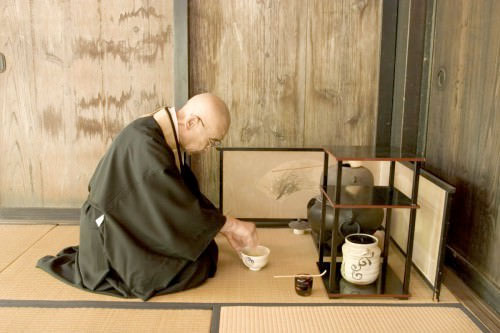TEA CEREMONY
The Japanese tea ceremony usually takes place in a simple tea house, so that the guest or guests have the opportunity to come to inner peace.

First, the mouth and face are washed. This serves to wash off all the evil they have done or said. Then the guests enter the teahouse and sit down on their knees. Here any social differences between participants are dispersed.
At the beginning of a ceremony, rice, soup and pickles are served while the tea water is boiled in a kettle. The guests have to leave the room once more. They are not allowed to enter the designated tea room until a gong sounds five times.
The most important utensils for a tea ceremony are: Matcha tea in a tin (Natsume), a tea bowl (Chawan), a water jug (Mizusashi), a kettle (Kama), a bamboo spoon (Chashaku) and a tea whisk (Chasen).
In the traditional Japanese tea ceremony, precise protocols are adhered to. For instance, the kettle is elevated to knee level. The tea cup is positioned roughly 20 cm ahead of the knees. The Matcha powder is situated between the tea cup and the knee.
After completing important steps, the Matcha is poured into the tea bowl and hot water is added. Using a whisk, the tea is then frothed to a foamy consistency. Customarily, the principal guest is afforded the honor of being the first to consume the tea, doing so in just three sips, after which the other attendees take their turns.

